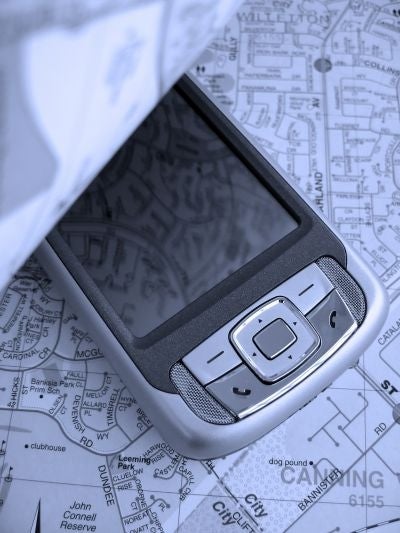Your support helps us to tell the story
From reproductive rights to climate change to Big Tech, The Independent is on the ground when the story is developing. Whether it's investigating the financials of Elon Musk's pro-Trump PAC or producing our latest documentary, 'The A Word', which shines a light on the American women fighting for reproductive rights, we know how important it is to parse out the facts from the messaging.
At such a critical moment in US history, we need reporters on the ground. Your donation allows us to keep sending journalists to speak to both sides of the story.
The Independent is trusted by Americans across the entire political spectrum. And unlike many other quality news outlets, we choose not to lock Americans out of our reporting and analysis with paywalls. We believe quality journalism should be available to everyone, paid for by those who can afford it.
Your support makes all the difference.In May 2011, 48 million mobile users in the US accessed maps on their device to locate buildings, find directions, and make their way home.
A study conducted by market researcher comScore found that map access on mobile devices has grown by 39 percent, up from 35 million users in May 2010.
While desktop map use still towers over mobile map use with its 94 million users (down 2 percent from 96 million in 2010), the shift from desktop to mobile is rapidly taking place in the US. Smartphones and apps are playing a major part in the transition.
"The strong growth in mobile map usage and flattening of desktop map usage is indicative of broader behavioral shifts being wrought by smartphones," said Mark Donovan, comScore senior vice president of mobile. "For years, consumers have been able to check directions on their desktop computers prior to leaving their home or office, now smartphones allow people to skip this step and access maps on the go, as they need them, showing off one of the most powerful capabilities of mobile — just-in-time-information."
Four out of every five mobile map users accessed maps from a smartphone said comScore - an increase of 75 percent from the year before.
Two-thirds of smartphone users used an application as their primary access point for maps on the go (an increase of 98 percent).
The vast majority (89 percent) of mobile users accessed maps before or while driving or riding in a vehicle; 17 percent of people looked at a map on their mobile while walking, running or biking; and an additional 14 percent of people used a map while on public transportation.
Google recently updated its Google Maps for Android application to include stop-by-stop public transport directions. Nokia launched a similar, free service for its Ovi customers in New York City back in May 2011.

Join our commenting forum
Join thought-provoking conversations, follow other Independent readers and see their replies
Comments